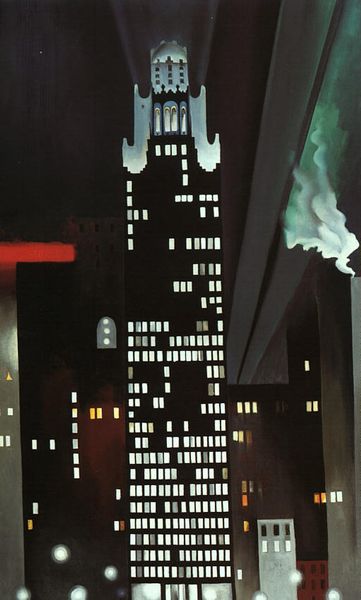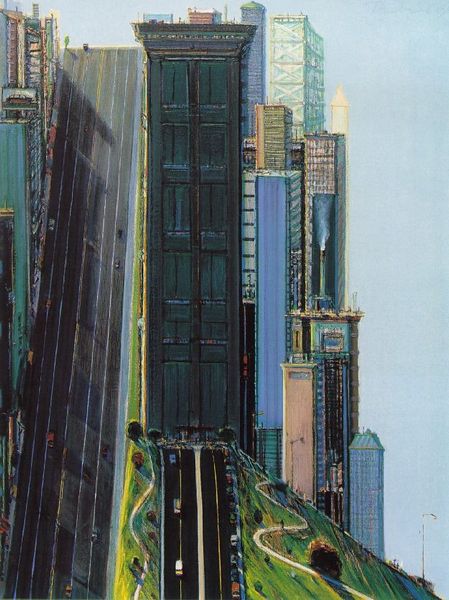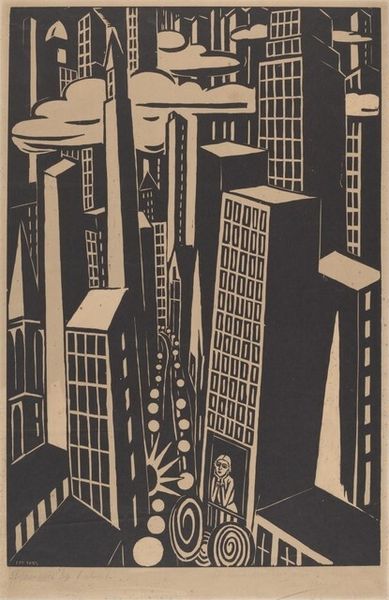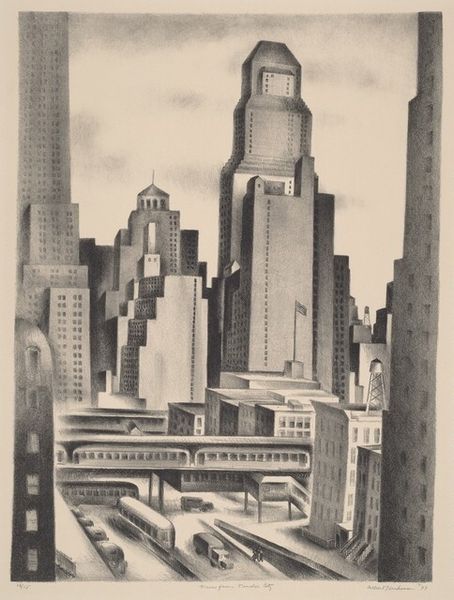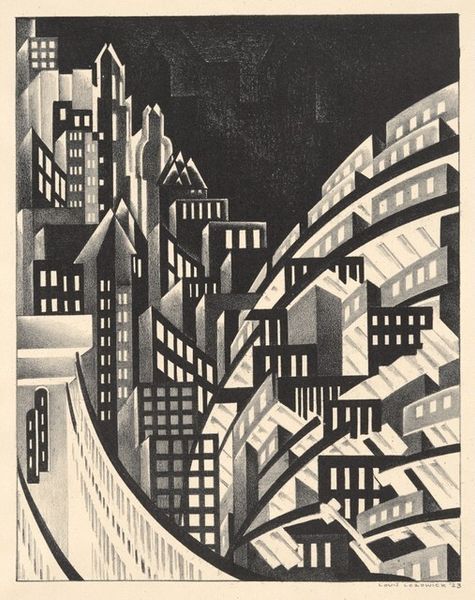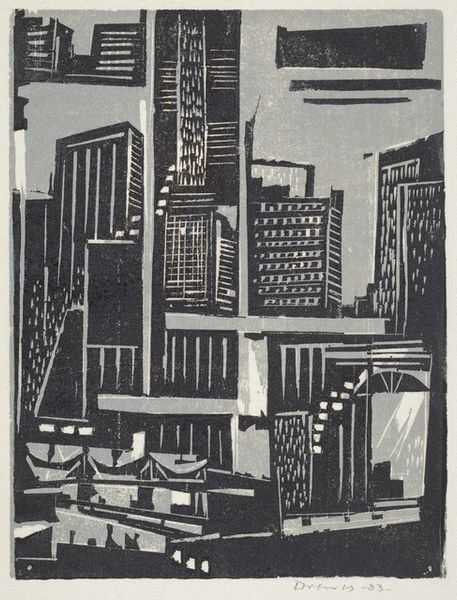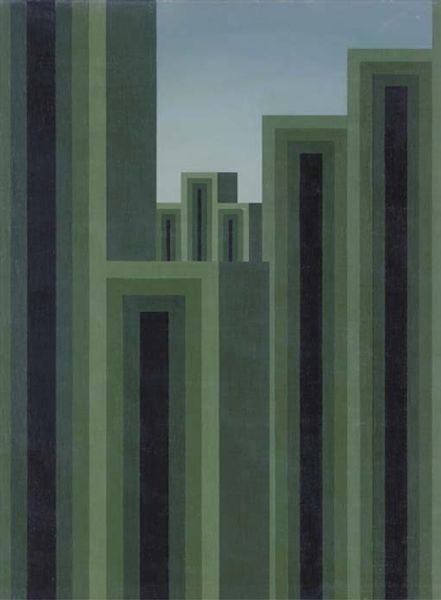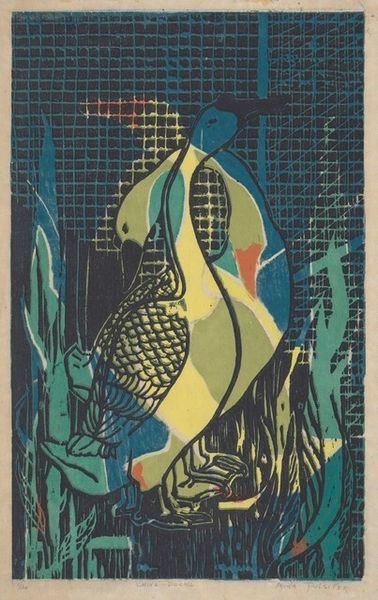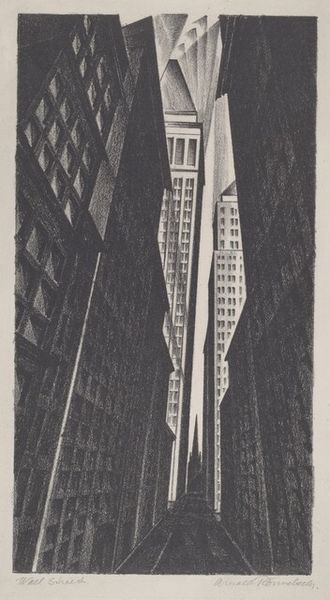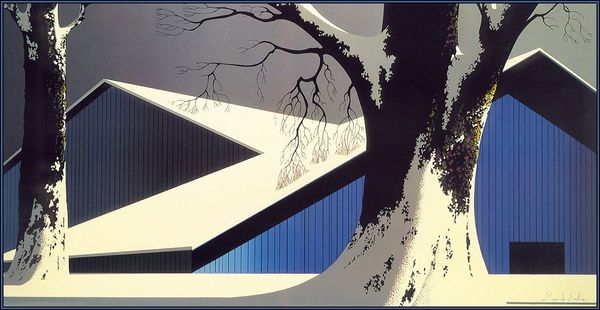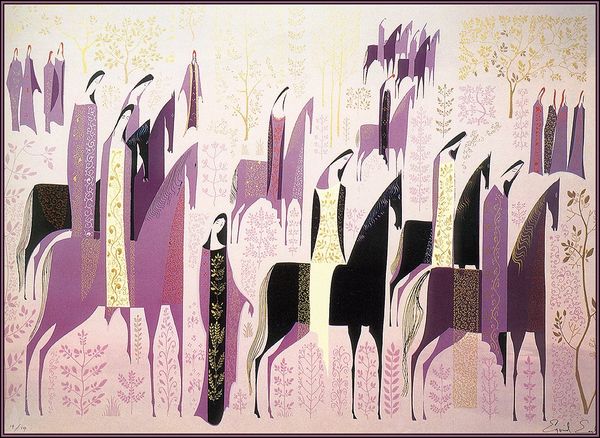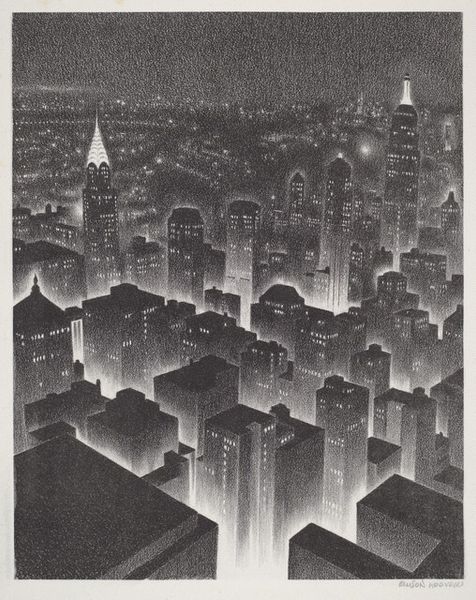
drawing, print, ink
#
drawing
#
sky
# print
#
landscape
#
ink
#
line
#
park
#
cityscape
#
modernism
Copyright: Eyvind Earle,Fair Use
Eyvind Earle's "Central Park" presents us with a stylized vision of nature meeting urban architecture. The buildings loom as slender, stylized purple forms, reminiscent of gothic spires. Created during a time of rapid urbanization, the image offers a commentary on the relationship between the built environment and the natural world. Central Park, conceived in the 19th century, was intended as a democratic space, offering respite to all social classes amid the density of New York City. Earle's simplification of form, however, could suggest a critique of the way urban planning and institutionalized green spaces organize nature. Note the bridge over the water, dividing the painting. Is it a symbol of harmony, or of the uneasy tensions between nature and artifice? As art historians, we delve into period documents, landscape architecture archives, and urban planning theory to illuminate the social dialogues embedded in works like these. Art, in the end, is never just an aesthetic object; it's a reflection of our ever-evolving human landscape.
Comments
No comments
Be the first to comment and join the conversation on the ultimate creative platform.
